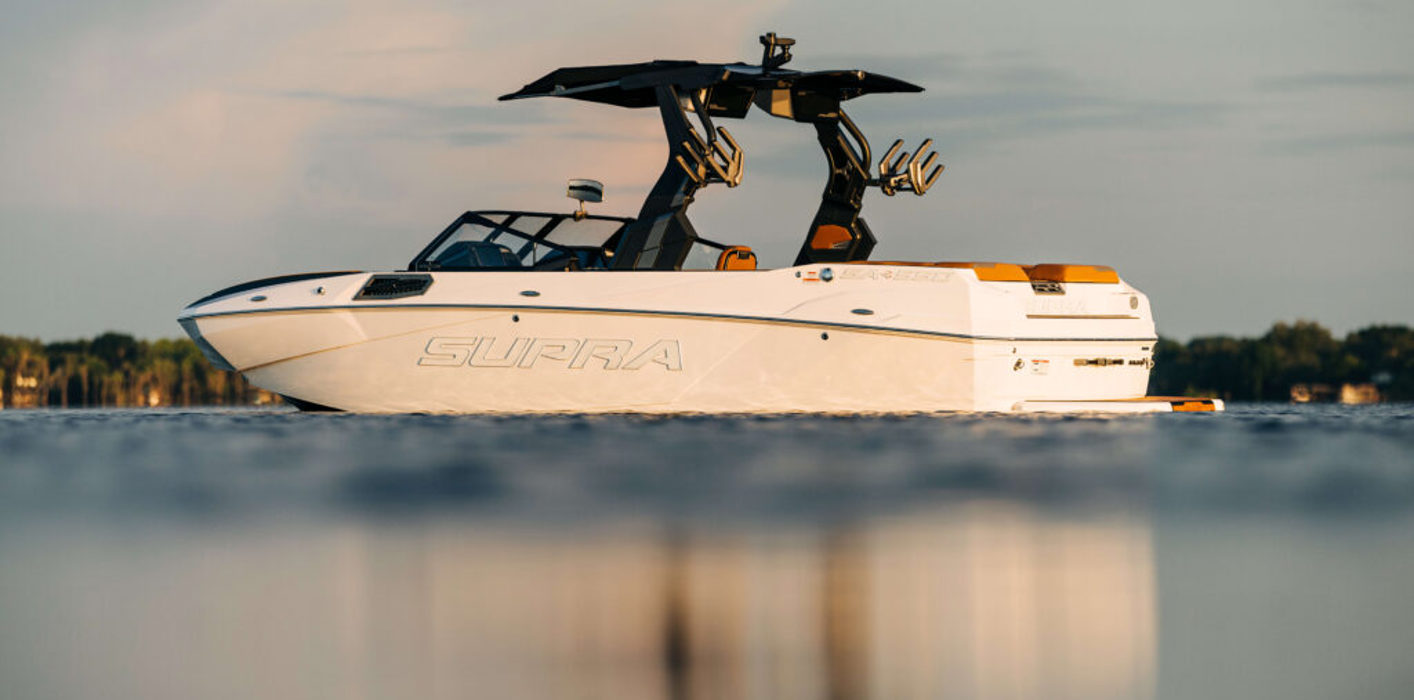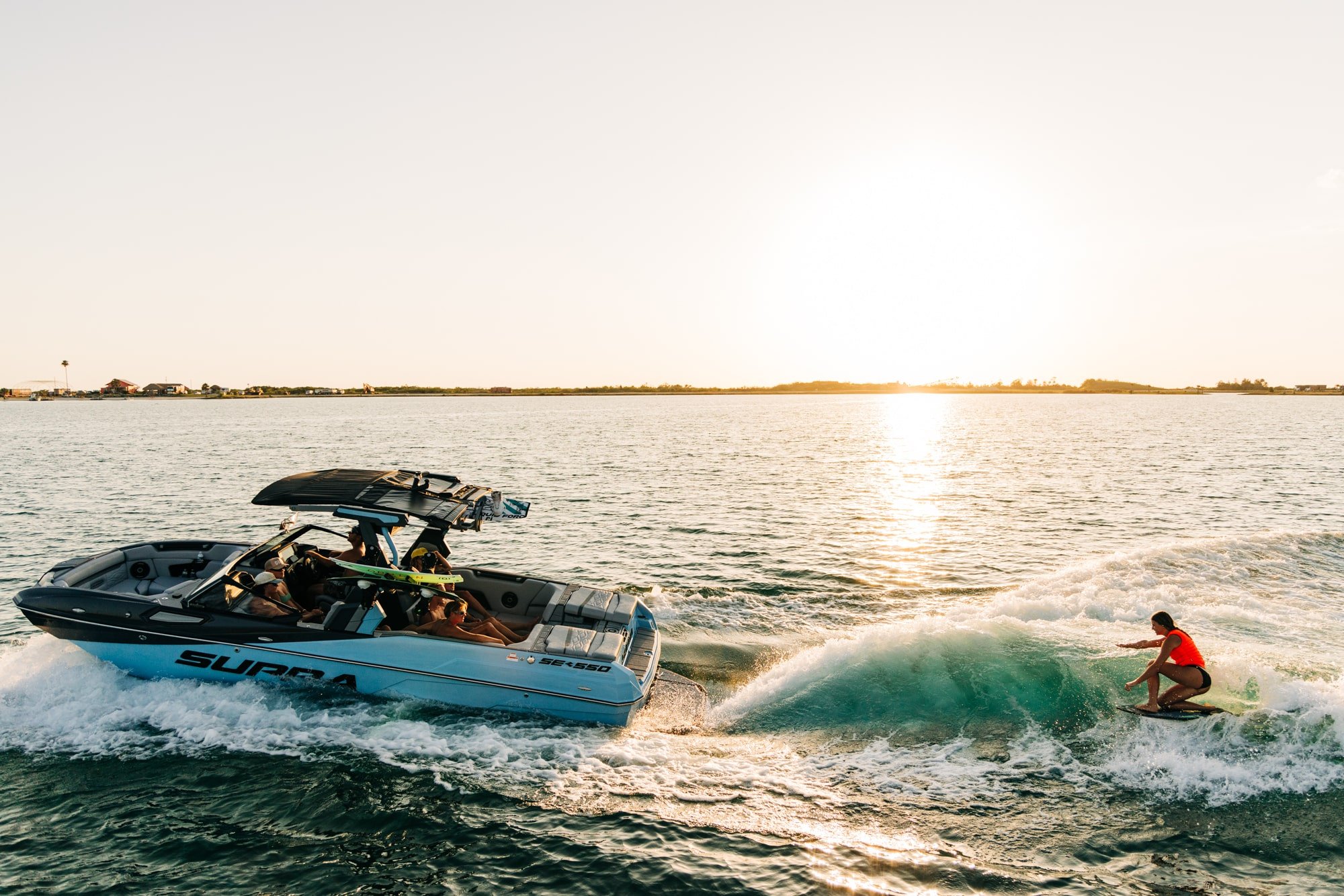Features
Your Boat Trade-In Value: What to Expect and How to Prepare
By Skier's Choice Marketing/ April 01, 2025
SHARE

Trading in your boat can be a great way to upgrade without the hassle of a private sale. Whether you’re stepping up to a newer model or finding one better suited to your lifestyle, understanding the trade-in process can help you get the most value for your boat. Here’s what you need to know to prepare, estimate your boat’s worth, and make the trade-in process as smooth as possible.
Why Trade in Your Boat?
Trading in your boat offers a straightforward path to upgrade to a new model without the challenge of a private sale—no need to meet with potential buyers, schedule test drives, or negotiate prices.
Many boat owners prefer trade-ins, especially when time is a factor. Dealers manage the paperwork, inspections, and logistics, making the process seamless. Plus, in some states, trading in offers sales tax savings when applied to a new purchase.
Considering an upgrade? Discover why Supra Boats has earned 19 consecutive CSI Awards for industry excellence. Learn more here.
Factors That Affect Your Boat’s Trade-In Value
Several factors influence your boat’s trade-in value. It’s not just about age; market demand, engine hours, and brand reputation all play a role.
-
Age and Condition: Naturally, a newer boat in excellent condition will fetch a higher trade-in value. Minimal wear and tear help boats stand out during inspection.
-
Service History: Keeping detailed service records can significantly increase your boat’s value. Regular maintenance, with documentation to prove it, signals care and reliability to dealers.
-
Market Demand: Popular models or brands and high-demand features often bring better offers, as dealers see strong resale potential.
Understanding Your Boat’s Trade-In Value
Estimating your boat’s value before visiting the dealership can help you prepare. Online resources like NADA Guides and Boat Trader offer rough estimates based on your boat’s make, model, year, and condition.
While these tools are useful, an in-person appraisal at a Supra dealership will give you the most accurate trade-in value. Dealers consider details that online tools may miss, such as unique upgrades or specific wear and tear.
How to Maximize Your Boat’s Value
Follow these steps to present your boat in its best light and get the highest possible trade-in offer:
-
Detail Your Boat: Clean everything—inside and out. A boat that looks well-cared-for is more likely to get top dollar.
-
Perform Minor Repairs: Fix any small, visible issues like scratches, loose fittings, or malfunctioning electronics.
-
Organize Your Documentation: Have titles, maintenance records, and any relevant documents ready. This makes the dealer’s job easier and shows you’ve taken care of the boat.
-
Consider Timing: Spring or early summer, when demand peaks, can yield better offers.
What to Expect During the Trade-In Process
The trade-in process is straightforward, but knowing the steps ahead of time can help you feel more prepared. Here’s what you can expect:
-
Appraisal: The dealer inspects your boat, assessing its condition, engine hours, and features. They’ll test its functionality and performance to get a clear picture of its current state.
-
Offer: Based on the appraisal, the dealer presents an offer reflecting condition, market value, and any refurbishing costs.
-
Negotiation: Don’t hesitate to negotiate.
-
Trade-In Credit: Once you accept an offer, the trade-in value applies as credit toward your next boat purchase, reducing the cost of a new or used boat at the dealership.
Trade-In vs. Selling Privately
Deciding between trading in or selling privately? Consider these factors:
-
Convenience: Trading in is quick and hassle-free while private sales can take weeks or even months.
-
Value: Private sales may yield a higher price, but require showings, negotiations, and paperwork.
-
Sales Tax Savings: Some states offer sales tax savings when you apply your trade-in value to a new purchase—an option not available with private sales.
Common Mistakes to Avoid
Avoid these common mistakes to maximize your trade-in value:
-
Skipping the Cleanup: A clean boat is more appealing and often brings a better offer.
-
Overlooking Minor Issues: Fixing small problems can significantly improve your trade-in value.
-
Skipping Research: Knowing your boat’s approximate value gives you leverage in negotiations.
Upgrade Made Easy: Putting It All Together
Trading in your boat offers a simple path to upgrading to a model that better suits your current needs. With preparation, understanding the trade-in process, and comparing offers, you’ll be well-positioned to maximize your boat’s value.
Ready to take the next step? Visit a local dealer today and experience the next level of boating with Supra.
SHARE

About Author
Skier's Choice Marketing
Skier's Choice Marketing Team

The Ultimate Guide To Choosing the Right Wakesurf Board
Wakesurfing is all about balance, flow, and performance, but choosing the right wakesurf board can make all the difference in your riding experience. Whether you're a beginner looking for stability or a seasoned rider dialing in your style, the right board will help you maximize control, speed, and maneuverability behind the boat.

Supra Boat Dealership in Minnesota
Supra Boats, renowned for high-performance engines, luxurious interiors, and innovative wake-shaping technology, caters to water sports enthusiasts in Minnesota through our award winning dealers. Whether wakeboarding or wake surfing, find the perfect boat from a trusted Supra Boats dealer in MN.

Ultimate Surfing Basics: The Beginner’s Guide to Wakesurfing
Wakesurfing combines the thrill of endless waves with the ease of boat-generated surf. Unlike traditional surfing, it offers a controlled, accessible experience for riders of all skill levels. Whether you’re new to watersports or looking to perfect a new skill, this guide will help you start surfing confidently, with tips on safety, technique, and the right gear for success.
